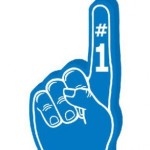It is the forecast season and three Colorado economic forecasts are on the streets.
First, the Governor’s Office of State Budgeting and Planning and the Colorado Legislative Council released their2015 Colorado economic forecasts.
Their forecasts are used for policy and budgetary purposes and at times tend to err on the conservative side. (That comment is intended to serve as a reference point, and is not meant as a criticism). The March forecast is often a more accurate reflection of what will happen during the year.
The good news is that both groups are realistically optimistic about the state’s outlook.
OSPB projects U.S. Real GDP growth of 2.7% with state job growth of 68,300. CLC is slightly more optimistic. They project U.S. Real GDP growth of 3.1% and state job growth of 73,600.
The quarterly reports produced by OSPB and CLC are recommended reading for anyone interested in the state economy. They discuss the economy for all regions of the state, key industries, and factors that impact the budget for the state government.
Finally, Richard Wobbekind recently unveiled the CU Leeds School Colorado economic forecast earlier in the month. As usual it was a rewrite of the past four years. He expects the U.S. to see significantly stronger U.S. output growth. At the same time he focuses on Colorado being one of the leading states for job growth, yet he states that Colorado will add jobs at a decreasing rate in 2015 after modest growth in 2014. CU is projecting Real GDP growth of 3.1% and state job growth of 61,300 in 2015. Those numbers just don’t make sense.
Between now and next year, Wobbekind and the CU gang should read the paper “Macroeconomic forecasts and microeconomic forecasters”. Author Owen Lamont raises the question, “Does an experienced research team, with a wealth of knowledge, produce a more accurate forecast or does the added knowledge result in an “arrogance” which may reduce the accuracy of the forecast? The state would benefit from CU producing a Colorado economic forecast based on academic rigor rather than self-promotion.
The good news is that this part of the forecast season has passed and all projections point to continued modest growth in 2015. Bring on the new year!



